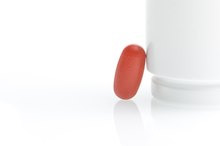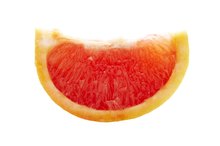What does fact checked mean?
At Healthfully, we strive to deliver objective content that is accurate and up-to-date. Our team periodically reviews articles in order to ensure content quality. The sources cited below consist of evidence from peer-reviewed journals, prominent medical organizations, academic associations, and government data.
The information contained on this site is for informational purposes only, and should not be used as a substitute for the advice of a professional health care provider. Please check with the appropriate physician regarding health questions and concerns. Although we strive to deliver accurate and up-to-date information, no guarantee to that effect is made.
The Effect of High Fiber Diet on Absorption of Medication
Dietary fiber is the indigestible portion of plants that changes the way in which the gastrointestinal tract absorbs other nutrients. By itself fiber has no calories, yet it provides a feeling of fullness after meals. Whole grains, beans, nuts, wheat bran, fruits and vegetables are all major sources of fiber. Experts have studied dietary fiber for its beneficial impact upon colon and digestive health, but a diet high in fiber also has the negative consequences of slowing or stopping the absorption of certain medications.
Absorption
Absorption describes the movement of a substance from the intestines into the bloodstream before it becomes "bioavailable" to the rest of your body. The rate of absorption depends upon several factors, including food intake and the state of your gastrointestinal health, but it is typically less than 100 percent. Absorption only applies to medication that is administered orally. An injection directly into the blood bypasses the digestive system altogether.
- Absorption describes the movement of a substance from the intestines into the bloodstream before it becomes "bioavailable" to the rest of your body.
- The rate of absorption depends upon several factors, including food intake and the state of your gastrointestinal health, but it is typically less than 100 percent.
Effects of Fiber
Grapefruit's Effect on Thyroid Medication
Learn More
Various types of fiber have different roles in the body. Soluble fiber appears to bind with bile acids and form a gel-like substance in the digestive tract. This slows down the absorption of certain nutrients and medication into the bloodstream. For example, it is known to have an impact upon cholesterol and glucose, and some experts have also studied the way in which fiber affects the absorption of minerals, although no impact has been found. Rather, the presence of phytate within cereal fiber appears to slow down mineral absorption, according to the Linus Pauling Institute 1.
- Various types of fiber have different roles in the body.
- Rather, the presence of phytate within cereal fiber appears to slow down mineral absorption, according to the Linus Pauling Institute 1.
Medication
Dietary fiber can significantly interfere with the absorption and effectiveness of the following prescription medications: tricyclic antidepressants such as doxepin and imipramine; anti-diabetic medication such as glyburide and metformin; the seizure medication known as carbamazepine; digoxin, which is used to regulate heart function; lithium, which helps with various psychological disorders; penicillin; and cholesterol medication such as cholestyramine and colestipol. In addition, oat bran and fruit pectin can interfere with certain statins.
Recommendations
Side Effects of Grapefruit Seed Extract
Learn More
The average American diet only contains 14 g of fiber a day. A more adequate amount, according to the 2005 Dietary Guidelines for Americans, is at least 14 g of fiber for every 1,000 calories consumed. This kind of high fiber diet entails eating a significant amount of fiber each meal — some foods contain more than 5 g in a single serving — but the best way to avoid interference is to refrain from taking medication up to two or three hours after the consumption of fiber-rich foods. If you are on medication, then you may have to work with your doctor in order to establish a meal plan that includes enough fiber throughout the day.
- The average American diet only contains 14 g of fiber a day.
- A more adequate amount, according to the 2005 Dietary Guidelines for Americans, is at least 14 g of fiber for every 1,000 calories consumed.
Related Articles
References
- Oregon State University Linus Pauling Institute; Fiber; Jane Higdon; December 2005
- Dahl WJ, Stewart ML. Position of the Academy of Nutrition and Dietetics: Health Implications of Dietary Fiber. J Acad Nutr Diet. 2015 Nov;115(11):1861-70. doi: 10.1016/j.jand.2015.09.003.
- Francesca De Filippis, et.al. High-level adherence to a Mediterranean diet beneficially impacts the gut microbiota and associated metabolome. Gut, 2015; gutjnl-2015-309957 DOI: 10.1136/gutjnl-2015-309957
- Harvard School of Public Health. http://www.hsph.harvard.edu/nutritionsource/carbohydrates/fiber/
- University of Maryland Medical Center. http://umm.edu/health/medical/altmed/supplement/fiber
- USDA.http://www.ers.usda.gov/topics/









